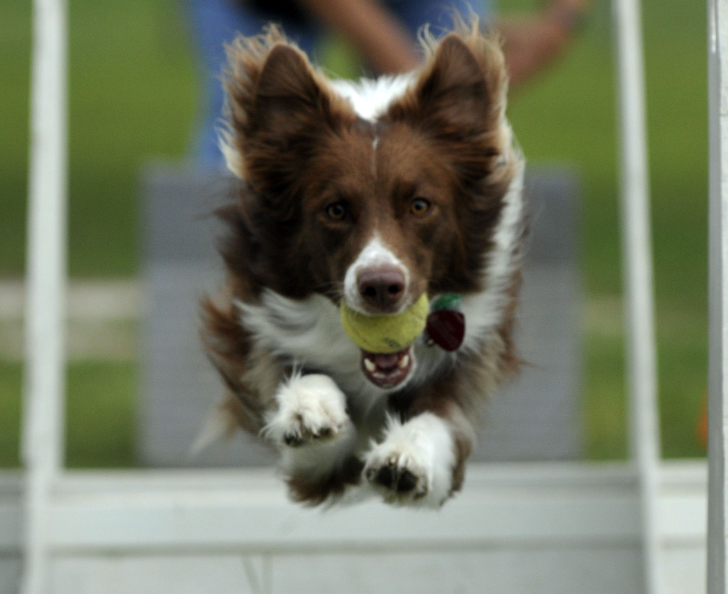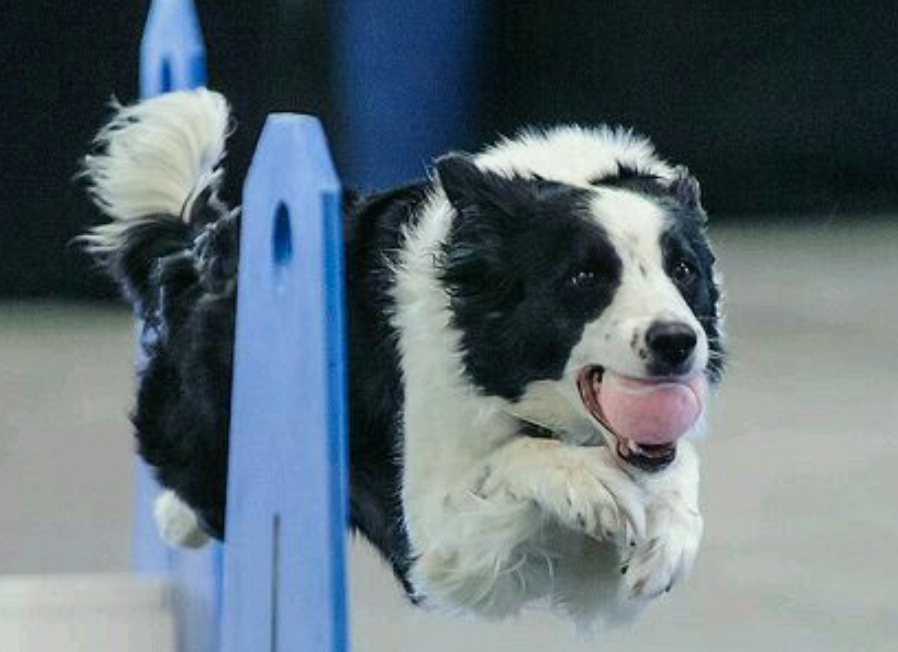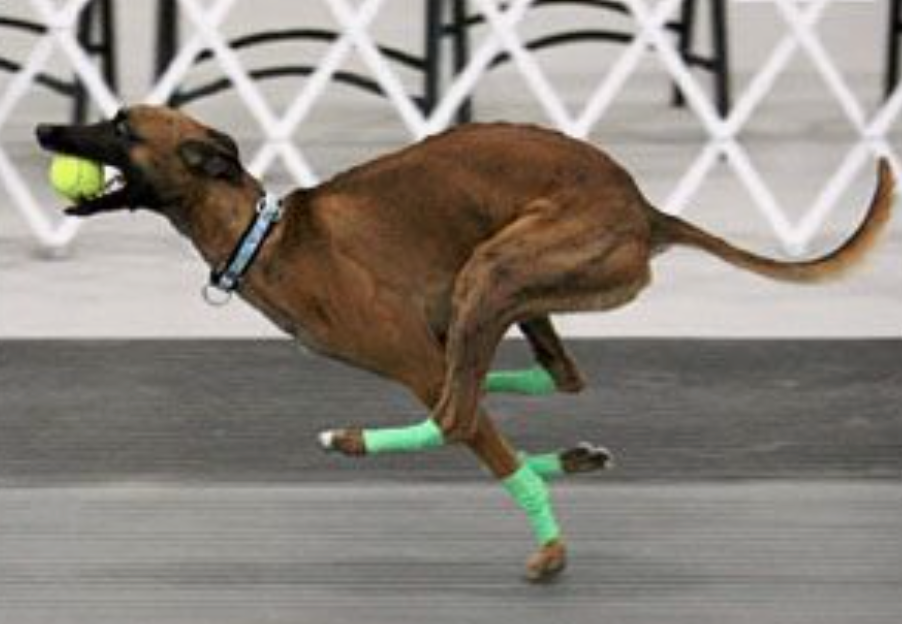Dogs are not just pets; they are beloved members of our families. As responsible dog owners, it is essential to provide our furry friends with regular exercise and mental stimulation. One exciting activity that incorporates both exercise and mental engagement is a fly ball (Flyball). In this article, we will explore the world of Flyballs for dogs, from understanding the sport to training your canine companion and participating in contests. So, let's dive in and discover the exhilarating world of Flyball!
Flyball is a fast-paced relay race that involves teams of dogs competing against each other. The goal is for each dog to run through a series of hurdles, retrieve a tennis ball from a spring-loaded box, and return over the hurdles to their handler. This thrilling sport tests a dog's speed, agility, and obedience while providing a fantastic outlet for their energy.
Benefits of Flyball for Dogs
Flyball offers numerous benefits for dogs, both physically and mentally. It provides an opportunity for dogs to socialize with other canines and humans, promoting positive behavior and reducing aggression. The sport also helps improve a dog's coordination, reflexes, and endurance. Additionally, participating in Flyball can strengthen the bond between dogs and their owners through teamwork and shared experiences.

History and Origins of Flyball
The history of Flyball dates back to the late 1960s when a group of dog trainers in Southern California sought a new and fun way to engage their canine companions. Inspired by horse relay races, they created a modified version for dogs, incorporating hurdles and tennis balls. This innovative sport quickly gained popularity and spread across the United States and eventually to other parts of the world.
Flyball as a Competitive Sport for Dogs
Over the years, Flyball has evolved into a competitive sport with organized tournaments and leagues. Teams of dogs and their handlers participate in races against each other, showcasing their speed, agility, and precision. These competitions often attract a dedicated community of dog enthusiasts who train and compete regularly, striving for excellence in the sport. Flyball tournaments offer a platform for dogs to demonstrate their skills and for owners to connect with like-minded individuals who share their passion for dogs and sports.
By combining elements of speed, agility, obedience, and teamwork, the Flyball provides a unique and thrilling experience for both dogs and their owners. It is a sport that celebrates the incredible abilities of dogs while fostering a sense of camaraderie and competition among participants. So, if you're looking for an exciting activity to engage your dog and yourself, Flyball might just be the perfect choice!
Always make sure to keep track of your pup, especially during training. You can use a Fi Smart Dog Collar to watch their location and keep track of daily exercise.
How Flyball Works
Equipment Needed for Flyball
To participate in flyball, you'll need a few essential pieces of equipment. These include:
1. Hurdles: Flyball hurdles are low barriers that dogs must jump over during the race. They are typically adjustable in height to accommodate different dog sizes.
2. Flyball Box: The Flyball box is a specialized device that holds tennis balls. It is designed to release the ball when triggered by the dog's paw pressure. Each team has a Flyball box at the end of the course, and the dogs must retrieve the ball from it.
3. Tennis Balls: Tennis balls are used as the object of retrieval in Flyballs. It's necessary to have enough balls available for each run, ensuring a smooth and continuous flow of the race.
4. Timing System: A timing system utilizes to measure the time taken by each team to complete the race accurately. It usually consists of sensors placed at the start and finish lines, along with a timer to record the results.
Setting Up a Flyball Course
Setting up a Flyball course requires adequate space and proper planning. Here are the key elements involved:
1. Start Line: The race begins with the dogs and handlers lined up behind the start line. This line is usually marked on the ground or with the use of cones.
2. Hurdles: A series of hurdles are placed at specific distances along the course. The number of hurdles may vary depending on the level of competition, but typically there are four hurdles for each dog to jump over.
3. Flyball Box: At the end of the course, the Flyball boxes are positioned. Each box is set up with a tennis ball ready to be released upon the dog's arrival.
4. Finish Line: The race concludes when the last dog crosses the finish line. This line is marked similarly to the start line.
Proper spacing and alignment of the hurdles, fly ball boxes, start line, and finish line is essential to ensure a fair and safe race.
Rules and Regulations of Flyball
Flyball follows specific rules and regulations to maintain consistency and fairness in competitions. Here are some key rules commonly observed:
1. Team Composition: A team typically consists of four dogs and their handlers. Each dog runs one at a time, and the next dog starts as the previous dog crosses the finish line.
2. Passing the Ball: The dog must trigger the Flyball box by applying pressure with their paws to release the tennis ball. The dog must then retrieve the ball and return over the hurdles to the handler.
3. Faults and Penalties: Faults can occur if a dog knocks over a hurdle or fails to trigger the Flyball box properly. These faults may lead to time penalties or disqualification depending on the severity and rules of the specific competition.
4. Timing: The timing system is used to measure the team's overall performance. The team with the fastest time wins the race.
It's crucial to familiarize yourself with the specific rules and regulations of the Flyball organization or competition you plan to participate in to ensure a smooth and enjoyable experience. Understanding the equipment needed, setting up the course correctly, and following the rules and regulations of Flyball are crucial aspects of engaging in this thrilling sport. Now that you have a grasp of the fundamentals, let's move on to the next section, which focuses on training your dog for a Flyball.
Training Your Dog for Flyball
Preparing your dog for Flyball requires a systematic approach that includes basic obedience training, building drive and motivation, and introducing your dog to Flyball equipment. By following these steps, you can set your dog up for success in this exhilarating sport.
Basic Obedience Training: Before diving into Flyball training, it's crucial to establish a foundation of basic obedience skills. Teach your dog commands such as sit, stay, come, and heel. These commands form the basis for effective communication and control during Flyball sessions. Positive reinforcement techniques, such as using treats and praise, can be highly effective in encouraging your dog to learn and obey these commands.
Building Drive and Motivation: Flyball requires dogs to be highly motivated and driven to chase the tennis ball and complete the course. To develop this drive, engage in play sessions with your dog using interactive toys and incorporate retrieval games. Encourage your dog's instincts to chase, retrieve, and have fun. Use high-value rewards, such as treats or their favorite toy, to reinforce their enthusiasm during training sessions.
Participating in Flyball Competitions
Participating in fly-ball competitions takes your dog's training to the next level and provides an opportunity for you to showcase your teamwork and skills. Here are the key steps to get involved and succeed in Flyball competitions.
Joining a Flyball Team: Joining a Flyball team offers several benefits, including access to experienced trainers, structured training sessions, and a supportive community. Look for local Flyball clubs or teams in your area and inquire about joining. These teams often welcome new members and guide training, equipment, and competition preparation. Being part of a team also fosters camaraderie among fellow dog enthusiasts, creating a fun and engaging environment for you and your dog.
Preparing for Competitions: To prepare for Flyball competitions, consider the following steps:
1. Refine Training: Continuously work on refining your dog's skills, ensuring they are proficient in jumping hurdles, triggering the Flyball box, and returning with the ball. Practice regularly and maintain consistency in your training sessions.
2. Conditioning and Fitness: Focus on your dog's fitness by incorporating regular exercise and conditioning routines. Engage in activities that improve endurance, speed, and agility, such as jogging, fetch, or agility training. A fit and healthy dog performs better in competitions.
3. Competition-Specific Training: Familiarize your dog with the competition environment and equipment. Train in environments similar to competition settings, gradually increasing distractions to simulate real-life scenarios. This helps your dog remain focused and calm during high-energy competition situations.
4. Review Rules and Regulations: Familiarize yourself with the specific rules and regulations of the Flyball organization or competition you will be participating in. Ensure that you understand the requirements regarding team composition, faults, penalties, and timing.

Strategies for Success in Flyball
To increase your chances of success in Flyball competitions, consider the following strategies:
1. Teamwork and Communication: Develop a strong bond and effective communication with your dog. Focus on clear verbal and non-verbal cues to guide your dog through the course. Practice seamless transitions and exchanges between teammates to optimize speed and efficiency.
2. Start Line Focus: Train your dog to remain focused and composed at the start line. Use techniques such as impulse control exercises and create a positive association with the start line. A solid start is crucial for a smooth and successful race.
3. Consistency and Precision: Practice consistent and precise handling techniques. Reinforce accurate jumps over the hurdles and encourage quick and efficient ball retrieval. The more consistent and precise your movements, the faster your team's overall performance will be.
4. Positive Reinforcement: Utilize positive reinforcement techniques throughout training and competition. Reward your dog for successful runs, regardless of the outcome. Maintain a positive and encouraging attitude, creating an enjoyable experience for both you and your dog.
Remember, participating in fly-ball competitions is about having fun, building connections, and celebrating the abilities of your dog. Embrace the learning process, be supportive of your teammates, and focus on continuous improvement.
In the next section, we will discuss the importance of health and safety considerations when engaging in fly-ball activities.
Health and Safety Considerations
Ensuring the health and safety of your dog is paramount when engaging in fly-ball activities. By incorporating warm-up exercises, preventing injuries, and prioritizing veterinary care, you can promote your dog's well-being and enjoy the sport to its fullest extent.
Warm-up Exercises for Dogs
Before each Flyball session or competition, it's essential to warm up your dog's muscles and joints. Warm-up exercises help increase blood flow, loosen muscles, and prepare the body for physical activity. Here are some warm-up exercises you can incorporate:
1. Light Jogging: Take your dog for a gentle jog to get their muscles warmed up. Gradually increase the pace to get their heart rate up.
2. Stretching: Perform gentle stretching exercises for your dog's legs, neck, and torso. These stretches can help improve flexibility and prevent muscle strain.
3. Jumping Exercises: Encourage your dog to perform controlled jumps over low hurdles or obstacles. This helps warm up their leg muscles and prepares them for the jumping aspect of a Flyball.
Remember to keep the warm-up exercises low-impact and avoid excessive strain on your dog's body. Consult with your veterinarian for specific warm-up routines tailored to your dog's individual needs.
Preventing Injuries during Flyball
To prevent injuries during the Flyball, consider the following precautions:
1. Proper Hurdle Height: Adjust the hurdle height according to your dog's size and abilities. Avoid setting the hurdles too high, which may lead to strains or sprains.
2. Training Surface: Ensure the training surface is safe and suitable for your dog. Avoid slippery or uneven surfaces that may increase the risk of slips or falls.
3. Gradual Progression: Progressively increase the difficulty and intensity of training sessions. Allow your dog to build strength and endurance over time, minimizing the risk of overexertion or injury.
4. Monitoring Fatigue: Keep a close eye on your dog's energy levels and signs of fatigue during training and competitions. Take breaks as needed and provide plenty of water to keep your dog hydrated.
5. Proper Rest and Recovery: Allow your dog sufficient rest and recovery time between training sessions and competitions. This allows their muscles and joints to repair and regenerate, reducing the risk of overuse injuries.
In the next section, we'll conclude our article with a summary and provide answers to some frequently asked questions about Flyballs.

Conclusion
In conclusion, Flyball is an exciting and competitive sport for dogs that provides numerous benefits for both dogs and their handlers. By following proper training techniques, ensuring the health and safety of your dog, and engaging in regular practice sessions, you can enhance your dog's skills and enjoy the thrilling experience of Flyball competitions. Remember to prioritize the well-being of your dog by incorporating warm-up exercises, taking preventive measures to prevent injuries, and seeking regular veterinary care.
Flyball is not only a sport but also a bonding activity that fosters communication, trust, and shared experiences between you and your dog. Alternatives to Flyball, such as agility, disc dog, tracking, and canine freestyle, offer similar benefits and provide additional opportunities for engagement and enjoyment. Engaging in Flyball activities stimulates your dog's mind, improves problem-solving skills, and enhances their focus and decision-making abilities. It is a rewarding activity that contributes to your dog's overall well-being and mental stimulation.
So, grab the opportunity to participate in Flyball with your canine companion, embrace the challenges, and celebrate the achievements together. Strengthen the bond, create lasting memories, and enjoy the exhilarating journey of Flyball!
Frequently Asked Questions
Here are some frequently asked questions about the fly ball:
1. Is the Flyball suitable for all dog breeds?
Flyball is suitable for most dog breeds. However, certain physical limitations may make it more problematic for brachycephalic breeds or dogs with mobility issues. Consult with a professional trainer to assess your dog's suitability for the sport.
2. How do I find a Flyball team in my area?
To find a Flyball team in your area, you can search online directories, visit local dog training facilities, or inquire about pet events and competitions. You can also reach out to national Flyball organizations for information on registered teams in your region.
3. Can older dogs participate in Flyball?
While the fly ball is often associated with younger and more active dogs, older dogs can participate as long as they are in good health and physically capable. It's essential to consider their fitness level, and joint health, and consult with a veterinarian to ensure their safety and well-being.
4. How long does it take to train a dog for the Flyball?
The duration of Flyball training can vary depending on the dog's breed, temperament, and previous training experience. It can take several months to train a dog from scratch, while dogs with prior obedience training may progress more quickly. Consistency, patience, and positive reinforcement are key factors in successful training.
5. Are there different Flyball organizations and competitions?
Yes, there are various fly-ball organizations and competitions around the world. Some popular organizations include the North American Flyball Association (NAFA), United Flyball League International (U-FLI), and European Flyball Association (EFA). Each organization may have slightly different rules and regulations.
Remember, always consult with specialists, such as trainers and veterinarians, for personalized guidance and recommendation based on your dog's specific needs and abilities.
For more helpful articles about pet-parenting tips, check out the Off Leash blog at TryFi.com.
Want to know more about TryFi.com? The Fi Dog Collar is a GPS tracking collar that not only keeps track of your dog’s location, activity levels, and sleep patterns, but it also alerts you if your dog escapes your backyard. This is the fastest way to find your dog after an escape. Try the Fi Dog Collar today!

